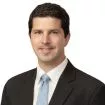- within Compliance, Consumer Protection, Government and Public Sector topic(s)
- with readers working within the Banking & Credit, Business & Consumer Services and Construction & Engineering industries
The U.S. Supreme Court recently granted certiorari for two intellectual property cases—one relating to patents and another for trademarks.
Patent Case
Relevant to patent law, the Supreme Court granted certiorari to decide the issue of enablement for patents with so-called “genus claims.” Genus claims are directed to inventions that are functional in nature, and with several possibilities for carrying out that function.
The case at issue involves an invention directed to a monoclonal antibody that binds to one of several residues. Many different antibodies can bind to these residues—and the patent only describes a few examples among millions of potential options (including many that are not yet known). So the issue to be decided is: Did the patent owner disclose the invention with enough detail to enable someone in the field to make and use the invention? More specifically, are a few examples enough or must one describe every example under the sun? Or perhaps it is impossible to provide the necessary support for genus claims and we should forget about them altogether?
This case is obviously one to watch for biotech patents, but could also have a spillover effect to mechanical and electric patents. Mechanical and electric patents often claim the invention with functional language such as “a clip coupled to a base.” In this extremely simple example, must the patent describe every manner of one item coupling to another? Glue? Fasteners? Zippers? Surely the law does not require such an exhaustive list.
It is interesting to note the Solicitor General had recommended against the Supreme Court accepting this case.
Trademark Case
The Supreme Court will also decide whether the owner of a U.S. trademark can recover damages for trademark infringement based on foreign sales. Trademarks, like many IP assets, are territorial. A U.S. trademark normally protects against consumer confusion only within the United States. However, the 10th Circuit Court of Appeals found the defendant's actions “diverted tens of millions of dollars of foreign sales from [the plaintiff] that otherwise would have ultimately flowed into the United States.” The court then affirmed a district court ruling that awarded damages to the trademark owner based on the substantial effect of the U.S.-based infringement on foreign sales.
Here, the Solicitor General implored the Supreme Court to accept the case, focusing on the domestic purpose of U.S. trademark law.
The content of this article is intended to provide a general guide to the subject matter. Specialist advice should be sought about your specific circumstances.


